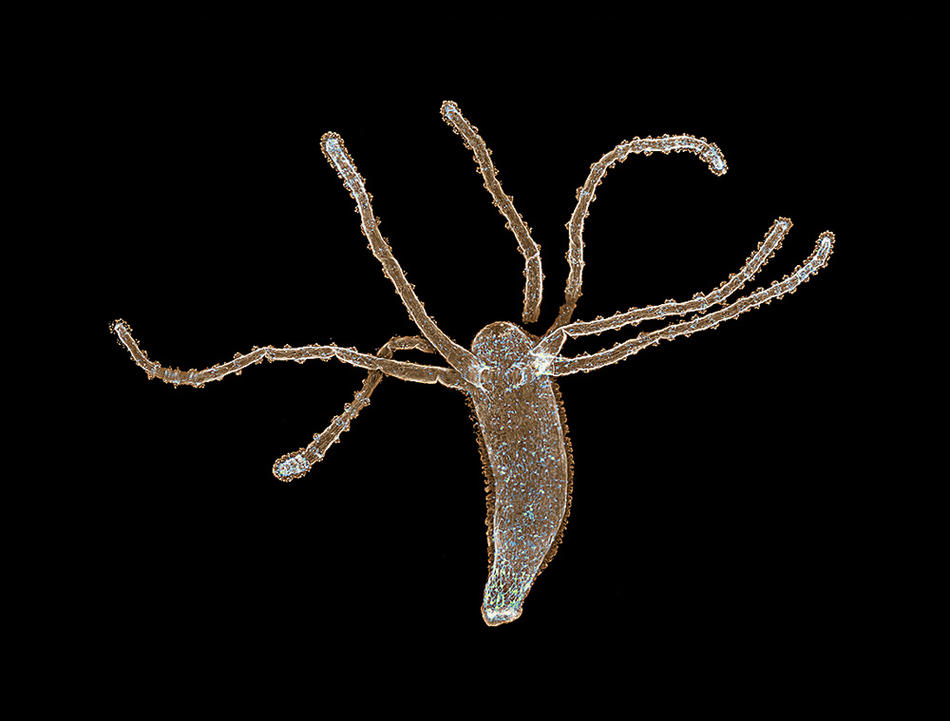Columbia neuroscientists have access to some of the most advanced technology in the world, but sometimes they learn from the simplest creatures. The hydra, a half-inch-long relative of the jellyfish, belongs to a group of aquatic organisms that first appeared some 750 million years ago, in the earliest stages of life’s evolution. Possessing one of the oldest and most rudimentary nervous systems, it provides a valuable window into the fundamental mechanisms of the brain.
Researchers in the laboratory of Rafael Yuste are studying the hydra to learn how neural circuits store and communicate information. But the hydra has another claim to fame: it is said to be immortal, because its body is constantly renewing itself with fresh stem cells. “The hydra’s regenerative powers are so incredible that if you break it up into individual cells and collect the cells in a test tube, they will reconfigure themselves into a proper animal within a few days,” says Jonathan Lovas, a graduate student in Yuste’s lab who is currently conducting experiments on the organism. “By observing how its nervous system reassembles itself, we hope to achieve new insights into the growth and development of nervous systems in more complex organisms, including mammals.”
This article appears in the Winter 2019-20 print edition of Columbia Magazine with the title "Our immortal partners." Video courtesy of Yuste Lab.



